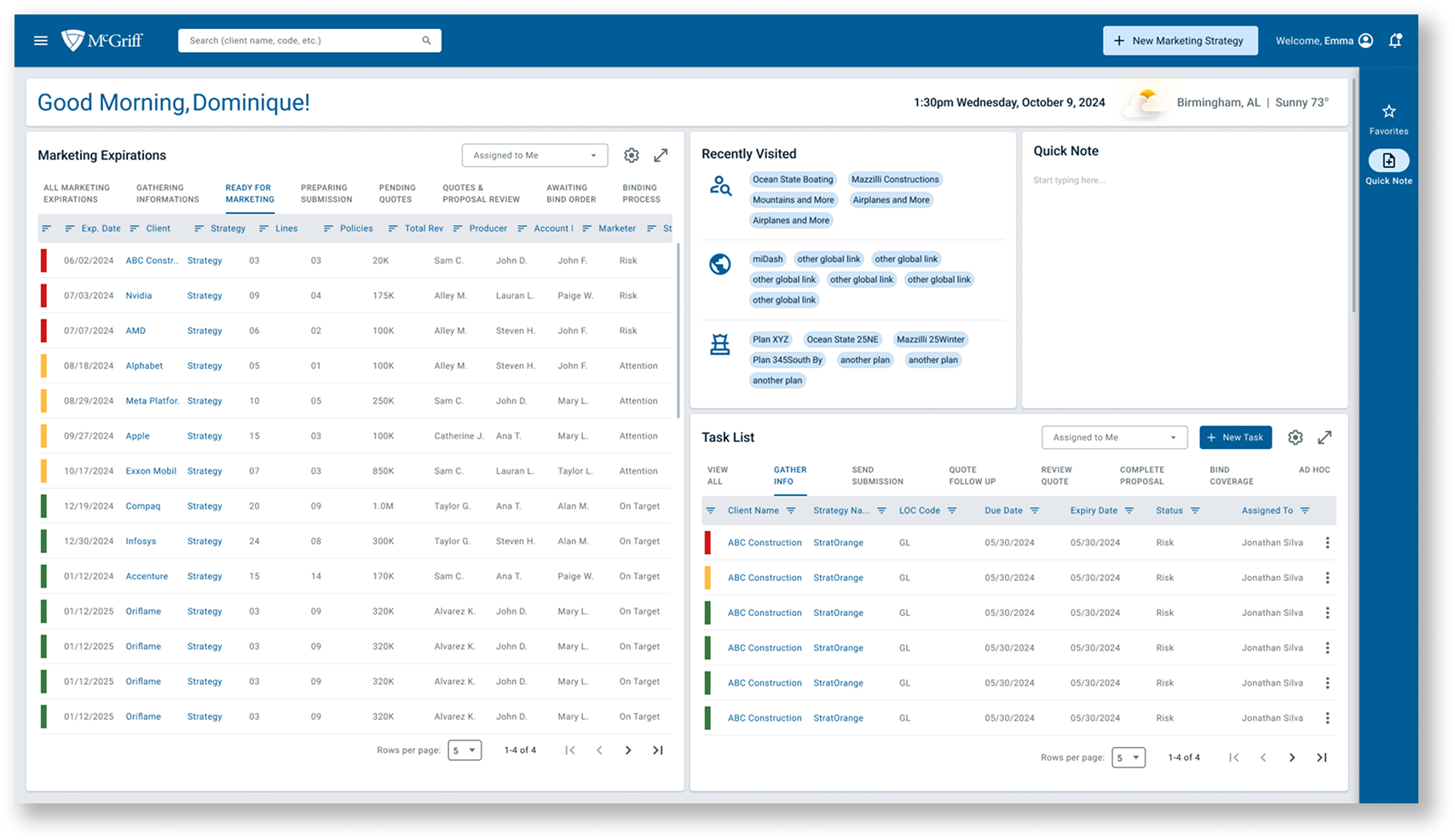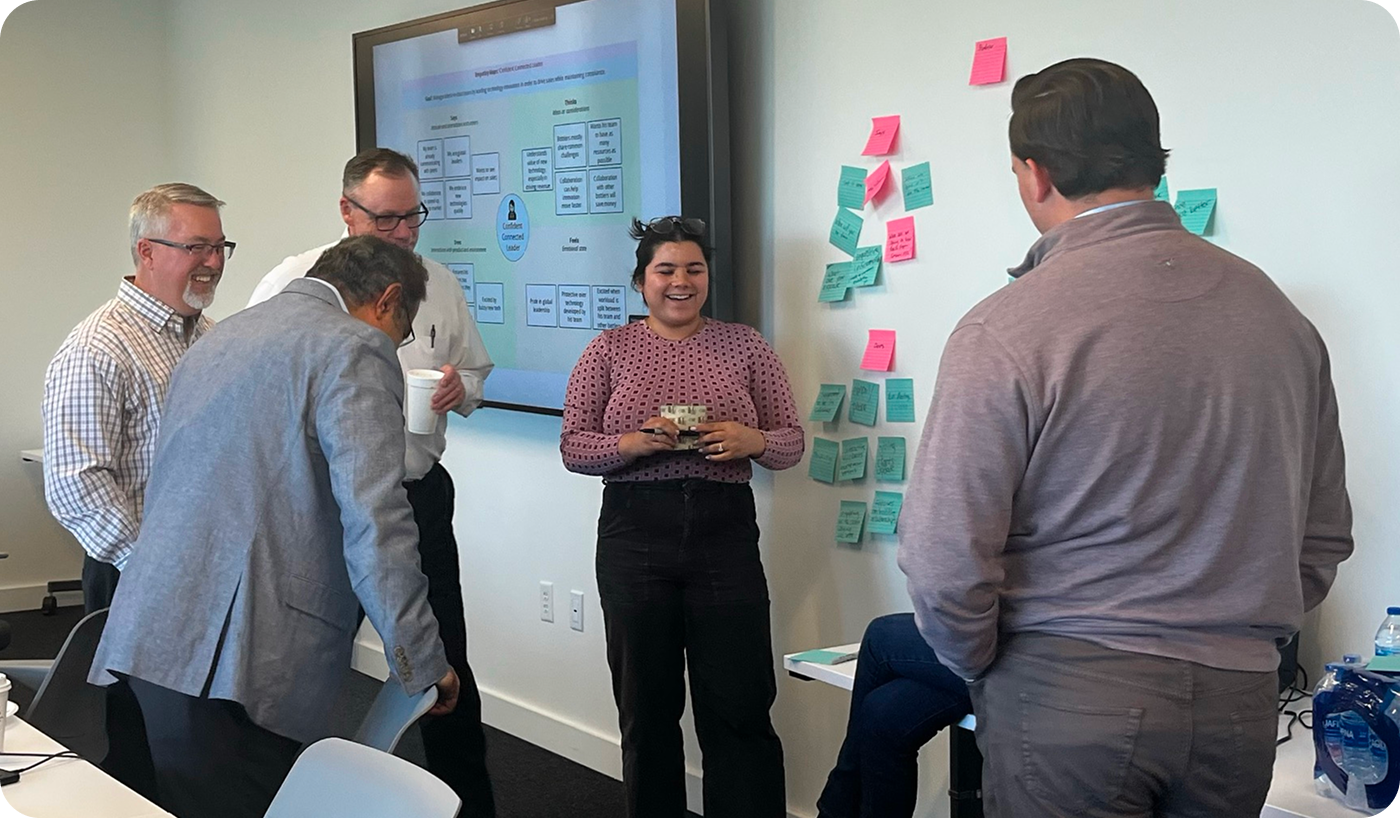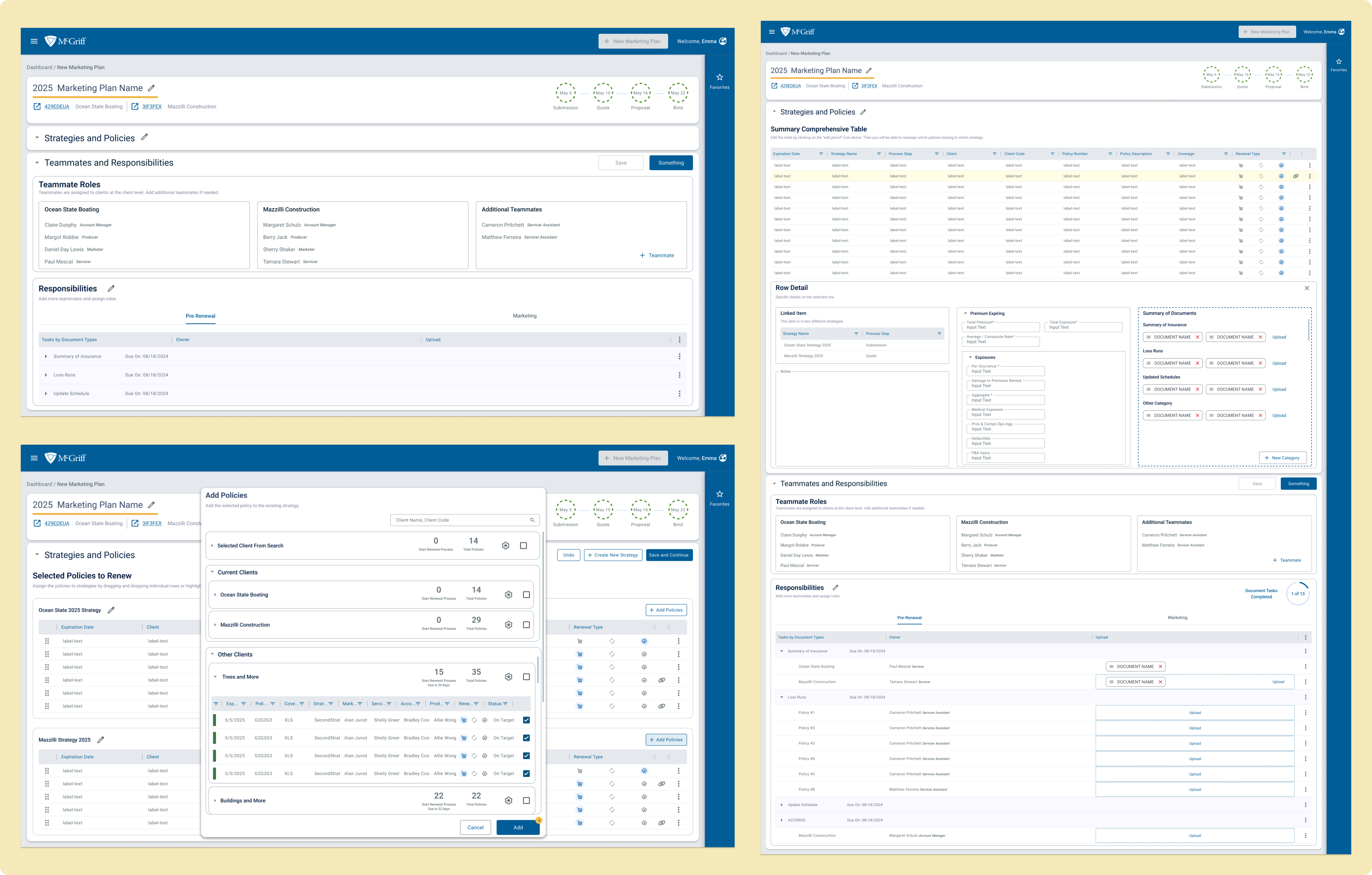MCGRIFF INSURANCE


The employees struggled with inefficient processes, particularly around gathering client information, submitting to carriers, and creating proposals. The existing tools were inadequate, leading to a lack of standardization, frustration, and decreased productivity. We were asked to modernize and innovate their platform through the development of a Broker Portal.
Designing a non-existent portal that would improve user workflows by addressing existing inefficiencies.
Figma, Miro
UX Designer (responsible for research, visual design, and interaction design)
Strategist (supported in workshops, interviews and led research)
UX Principal (provided overall guidance)
Myself, UX Designer (led the design work and supported in research) During the research phase, I collaborated closely with the team, and in production, I worked directly with stakeholders and the UX Principal.
8 months
We conducted interviews with 10 stakeholders from McGriff to uncover their challenges, goals, and frustrations with the current process. Key themes from the interviews included frustrations with manual processes, difficulties with technology integration, and the need for a more efficient and streamlined experience.
We created empathy maps to visualize the emotional and functional needs of our personas, diving deep into what they say, think, do, and feel. These helped us synthesize the information gathered from interviews and align with user expectations.
We created personas that helped us understand the different user roles and their pain points. We focused on three core personas:
These personas provided us with high-level goals, needs, and behaviors, helping us to tailor the portal experience to the distinct needs of each role.

We held a workshop in Georgia, which was instrumental in shaping our strategy for the portal. During this session, we facilitated activities that helped identify pain points, define user journeys, and generate ideas for improvement.
These activities informed the development of features for the portal that would alleviate pain points and enhance the user experience.
Lack of Standardized Processes
Pain Point: Stakeholders were frustrated with the lack of standardized processes and the inefficiency of using multiple tools for data entry, leading to errors and time-consuming manual tasks.
Solution: We designed a dynamic proposal creation tool that consolidates data input, automates repetitive tasks, and ensures consistency across the process, eliminating the need for manual data entry and reducing errors.
Fragmented Communication and Inability to Track Submissions
Pain Point: Users struggled with fragmented communication and the inability to track the status of submissions and proposals across different carriers.
Solution: We introduced a centralized dashboard that provides visibility into submission statuses, renewal lists, and carrier analytics, streamlining communication and collaboration between brokers, clients, and underwriters.
Slow Proposal Processes
Pain Point: The existing tools, like Sagitta, were seen as difficult to use, lacked integration, and caused delays in the proposal process.
Solution: We implemented a carrier submission creation tool with standardized templates and an AI-powered loss run summary creator, reducing time spent on formatting and improving proposal quality.

We began by designing the "happy path" for the Broker Portal. This involved outlining the ideal user experience for completing a proposal and submitting it to carriers. We focused on simplifying the process, reducing manual input, and providing users with the tools they need in one place.
In phase 2, we worked closely with stakeholders and developers to refine and expand the portal's design. We used Azure to track tasks and ensure that each design aligned with the overall project goals. As the design progressed, we continued to iterate based on feedback from stakeholders and devs.


We were able to work closely with McGriff’s UX Design Lead and pass the torch with a mapped-out flow of how the screens and workspaces came together, as well as which screens still needed to be created. The hand-off included the design system and the research done during the eight and a half months, as well as a recording of how the flows of all the screens fit together.
Leadership and Collaboration
Leading conversations with stakeholders helped me gain a better understanding of their pain points and how to translate them into design solutions. I learned how to effectively communicate design ideas and gather feedback that guided the project forward.
Iterative Design Process
The importance of iteration became clear as we moved from low-fidelity sketches to more detailed designs. Working closely with developers and stakeholders in Phase 2 reinforced how design should evolve in collaboration with all team members.
Balancing Stakeholder Needs with User-Centered Design
I learned how to navigate the balance between business requirements and user needs. The challenge was ensuring the portal was both functional for McGriff employees and intuitive for end-users.
Instead of moving directly from the "happy path" to development, I would have regrouped with stakeholders to refine the happy path further, ensuring it fully aligned with their expectations and breaking the project into smaller steps. This would have allowed us to more effectively tackle the next steps and ensure we were aligned on priorities before diving into full development.